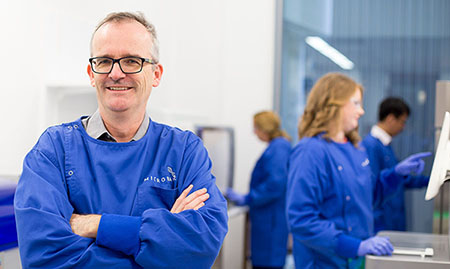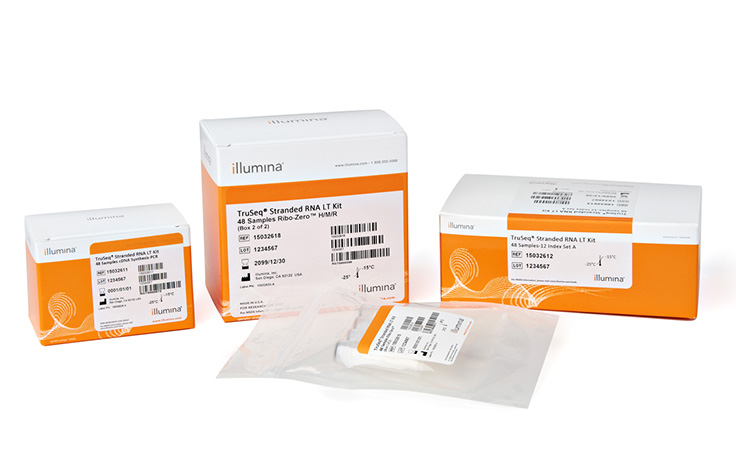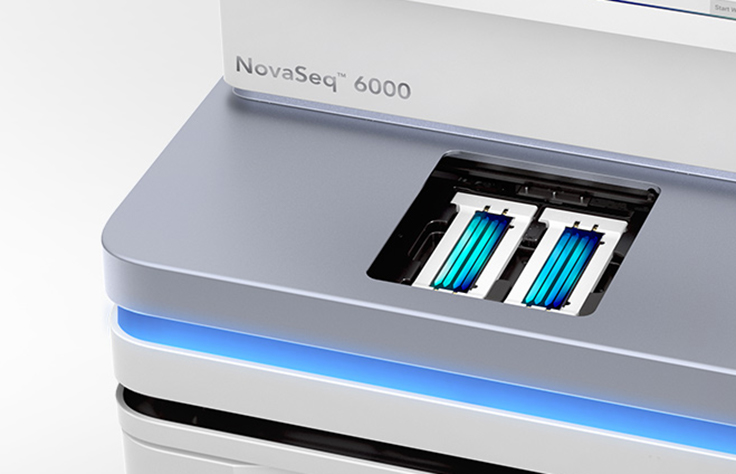NGS is Revealing the Mysterious World of Microbes
Introduction
There is more to the human body than meets the eye. It contains trillions of cells that belong not to us, but to microbes. Researchers are now discovering that these microbes play a critical role in human health and disease. Yet, the human body is not the only place microbes live. They are everywhere, literally: our guts, homes, oceans, and soil. The vastness of the microbial world has gone underappreciated for a long time. With the aid of next-generation sequencing (NGS), scientists are now rigorously investigating this immense, microscopic universe.
This is the research focus of Philip Hugenholtz, PhD, Director of the Australian Centre for Ecogenomics (ACE) and Professor in the School of Chemistry and Molecular Biosciences at the University of Queensland, and cofounder of the microbial genomics company Microba. Through his research at the University of Queensland, he aims to shed light on the “microbial dark matter,” that exists inside our bodies and in the environment. NGS has enabled Dr. Hugenholtz and his team to classify the microbial tree of life. His company, Microba, extends that effort with shotgun metagenomic sequencing using the NovaSeq 6000 System to analyze peoples’ gut microbiomes rapidly and accurately. The in-depth microbial genomic data enables Microba customers to understand their body and their health better, and track changes in their gut over time. Though microbiome tests are still novel, Dr. Hugenholtz believes that a personalized microbiome test could become a routine part of health care one day soon and “might be something that is performed annually, like a blood test.”
iCommunity spoke with Dr. Hugenholtz about advances in genetic sequencing technology and microbiology, his research on the microbial tree of life, Microba and the human microbiome, and the future of metagenomic research.

Q: Why did you choose microbiology as your field of study?
Phil Hugenholtz (PH): When I was young, I did a project looking at lake organisms under the microscope. I remember being amazed that there were all these life forms that I could see wriggling around in lake sediment water. The idea of scale was very interesting to me; that you could go up or down several orders of magnitude and there were completely different universes out there.
Q: What is the focus of your research?
PH: My research centers around ways of exploring microbial communities without having to culture them. Historically, most of microbiology has been reliant on growing microorganisms on agar plates or in liquid media. That was challenged in the mid- to late-1980s when we were able to describe organisms by their genome sequences. It was a major turning point in biology. We had a huge group of organisms that we had been unaware of mostly. Sequencing has enabled us to identify and understand the microbes we are looking at and how different the organisms are.
Q: How have bacterial identification methods and tools changed over the last 20 years?
PH: In the early 1970s, sequencing technology was in its infancy and it was a huge challenge. Researchers targeted the 16S rRNA, a subunit of the ribosome, because we could use that sequence to relate organisms to each other. It is only 1500 base pairs long. By today’s standards, that’s a trivial amount of DNA to sequence. However, it was a huge undertaking in the 1970s that was incredibly costly and time consuming. By sequencing those molecules and comparing the sequences to each other, we could determine objectively how closely or distantly related organisms were from each other.
"If we have an uncultured organism, 16S rRNA tells us whether it’s novel. If we sequence the whole genome...we can look at all the other genes that organism has. It enables us to look at pathways and infer a microbe’s potential."
Q: Why is shotgun metagenomic sequencing more useful than 16S rRNA sequencing?
PH: With 16S rRNA, we are sequencing one gene. With shotgun metagenomics, we are sequencing the whole genome at high resolution. If we have an uncultured organism, 16S rRNA tells us whether it’s novel. If we sequence the whole genome, even if we haven’t isolated the organism, we can look at all the other genes that organism has. It enables us to look at pathways and infer a microbe’s potential. Is it aerobic? Does it have photosynthetic genes? Is it capable of sulfur respiration? We can infer what an organism does from its genetic blueprints. We can also create a more detailed evolutionary tree.
Q: How has the development of NGS technology advanced your research?
PH: NGS has made a huge difference in my research. Older sequencing technologies were expensive and provided a limited view of what was going on. NGS enables us to resolve the genetic blueprints of organisms within communities and obtain genome sequences from more complex environments. We’re at an amazing point in microbiology and in biology, where we can use sequencing to obtain hundreds of genomes from an ecosystem.
Q: When did you begin using NGS to perform high-throughput shotgun metagenomic sequencing?
PH: I was fortunate to be part of two labs that pioneered the use of shotgun sequencing for studying microbial communities. I started using shotgun metagenomics when I joined Dr. Jill Banfield’s laboratory at the University of California, Berkeley in 2001. She’s a geologist, not a microbiologist, but was interested in characterizing microbial communities for her research. We performed one of the first shotgun metagenomic studies in her lab. It was the first demonstration that we could shotgun sequence a microbial community, obtain genomes, and perform metabolic reconstruction of component community members.
After a stint in Dr. Banfield’s lab, I remained in the US for several years. I headed the metagenomics program at the Joint Genome Institute, which is a DOE facility in Walnut Creek, California. That position provided the opportunity to become an early adopter of NGS. The first NGS system, the Roche 454 System, tripled our sequencing output within a year.
The Illumina Genome Analyzer System was introduced a year later and our sequencing output increased 10- to 20-fold over the previous year. It was amazing. We’ve used Illumina NGS systems ever since. Currently, we have a NextSeq 550 System for research purposes at the university. We have a NovaSeq 6000 System at Microba, which is running great and producing large amounts of reliable data.
"NGS enables us to resolve the genetic blueprints of organisms within communities and obtain genome sequences from more complex environments."
Q: How is shotgun metagenomic sequencing being used to create the microbial tree of life?
PH: We’re looking at whole genomes using shotgun metagenomics and obtaining beautiful species-level resolution. In fact, we can even obtain subspecies resolution, which is an important benefit.
The current classification scheme for organisms includes many errors. The original classification scheme was based on things that we could grow, predating sequence analysis. Many organisms were classified by distinctive morphotypes. For example, there are many bacteria that are classified as Clostridium because they are rod shaped and can produce spores. However, when you look at the genes of those organisms, many are very different and not related to each other. So, there’s a substantial amount of misclassification.
My team at the University of Queensland has been spending most of its time improving the microbial classification system using whole genome data. We’ve taken 120 genes that are well conserved within the bacterial domain, and made a microbial tree based on them. The tree has a higher resolution than our previous classification system.
Q: What led you to start Microba?
PH: Dr. Gene Tyson and I established ACE and were successful in using a molecular toolkit to interrogate different microbial ecosystems. We realized that we could use shotgun metagenomics to perform gut microbiome profiling at high resolution. At the time, no one else was doing it commercially and we decided to form Microba. Our mission is to apply shotgun metagenomics and obtain a high-resolution picture of the gut microbiome for our customers.
Q: Why is it important to understand the human gut microbiome?
PH: Most of the microorganisms that reside within us are in the gut. Research studies show that the gut microbiome is more integrally involved in our health and well being than we previously gave it credit for. It is the sentinel of human health. Microbes can break down fiber, which we are unable to do ourselves, producing short-chain fatty acids that feed our gut cells, help regulate metabolic processes, and can even influence gene expression.1-2 One of the main neurotransmitters that we use as humans, serotonin, is primarily produced and consumed in the gut and can be influenced by our microbes.3 There’s also information showing that people suffering from chronic depression have different gut microbiome profiles than healthy people.4
While there have been correlative analyses, the main criticism in the field is that there haven’t been many causality analyses. However, they’re coming online now, with a few well-recognized cases that demonstrate causality in animal models. The next few years should see more of this research moving to humans.
"Once we receive the samples at Microba, we use an automated process to extract the DNA and sequence the samples on the NovaSeq 6000 System, generating five gigabytes of data per sample."
Q: How is NGS integrated into your gut microbiome testing protocol?
PH: Our primary product is the Insight Sampling Kit. Customers sign up online and receive a fecal sampling kit in the mail. Fecal samples are indicative of what’s occurring in the lower bowel. They contain a high percentage of microbes, so it’s easy to extract microbial DNA. Once we receive the samples at Microba, we use an automated process to extract the DNA and sequence the samples on the NovaSeq 6000 System, generating five gigabytes of data per sample.
We created a database of reference genomes that represents most of the microbial diversity present in a fecal sample. We map the sequencing reads back to these reference genomes. The data are processed through a bioinformatic analysis pipeline that we’ve automated to make it as fast as possible. The interpreted information is uploaded to the website for the customer to log in and review their results.
Q: Why did you choose the NovaSeq 6000 System to perform shotgun metagenomic sequencing?
PH: Illumina has been the market leader for the past several years. The NovaSeq 6000 System possesses the most mature NGS technology at this point and is very reliable. As a startup company, we needed a reliable platform that’s best in class, easily scalable for increased sample numbers, and has good technical support. Illumina ticked off all those boxes.
Q: What is the turnaround time for the Microba Insight test?
PH: We batch the samples and the high-throughput NovaSeq 6000 System enables us to sequence 92 samples in a couple of days. The bioinformatic analysis is completed in 48 hours. So once we have enough samples for a run, our sample to data turnaround time is very fast. Shipping out the sampling kit and getting the sample back is what adds time to the process.
Q: How do you translate the sequencing data into a report that consumers can understand?
PH: Creating an easy to understand analysis report has been a significant challenge because the data sets are so rich. We’re interacting with customers who are typically not scientists. We’ve created a two-layer report, where we highlight major results upfront and keep it very simple. We provide functional information and can show results relative to the whole customer population. We can flag data that is atypical, such as high amounts of a particular organism or reduced amounts of important functional genes. In the literature, there are several things that have been associated with health, such as the genetic potential to produce the short chain fatty acid butyrate5 or the endotoxin lipopolysaccharide,6 so we provide that data as well. For people who are interested, we provide another report layer that digs down into the microbial community structure and functional information in detail. Customers can also call us and talk with a Microba microbiome coach who will review their profile with them, walk them through the data, and explain what the results mean.
The most that we can do today is make dietary suggestions and help people understand how their diet, gut microbiota, and health might be linked. In the future, we should be able to provide clinically tested pre- or probiotics, or microbial products based on a person’s gut microbiome profile.
"I imagine that in the same way that certain drugs work more effectively in individuals with certain genetic profiles, drugs will be microbiome-specific as well."
Q: Where do you see metagenomic research going in the next decade?
PH: I think a significant growth area will be having your microbial profile combined with your own genetic profile. I imagine that in the same way that certain drugs work more effectively in individuals with certain genetic profiles, drugs will be microbiome-specific as well. I believe understanding how the host and microbiome genotype interface will be a powerful aspect of personalized medicine.
In terms of testing, I imagine that people will obtain their gut microbiome profile through their general practitioner in the future. It might be a test that is performed annually, like a blood test. At the moment, gut microbiome testing is viewed as a novelty and in some regards it is. However, I believe that such tests will become mainstream in the next 5–10 years.
Q: What are your goals for Microba in the next five years?
PH: We’ll be introducing time-series sampling, so that customers can follow changes in their gut microbiome over time. For example, if a person is on a diet, they’ll be able to compare data from different time points to see whether the diet is altering their gut microbiome over time.
We’re focused on expanding into the international market and lowering the price of our gut microbiome test to make it accessible to a wider range of people. Some of our customers have opted in to permit the use of their data for scientific research. To contribute to the future of personalized medicine and to increase the value of the company, we are mining this metagenomic data to identify potential therapeutics. In the future, we also hope to develop tests for other important human microbial communities, such as the mouth and skin microbiomes.
Interested in reading more?
- 16S rRNA Sequencing
- Shotgun Metagenomics
- Learn how Illumina NGS technology was used to characterize the genome of the coronavirus in China (in combination with other sequencing technologies), as published in the New England Journal of Medicine on January 24, 2020.
References
- Makki K, Deehan EC, Walter J, et al. The Impact of Dietary Fiber on Gut Microbiota in Host Health and Disease. Cell Host Microbe. 2018; 23:705—715.
- Holscher HD. Dietary fiber and prebiotics and the gastrointestinal microbiota. Gut Microbes. 2017; 8:172—184.
- De Vadder F, Grasset E, Mannerås Holm L, et al. Gut microbiota regulates maturation of the adult enteric nervous system via enteric serotonin networks. Proc Natl Acad Sci U S A. 2018; 115:6458—6463.
- Cheung SG, Goldenthal AR, Uhlemann AC, et al. Systematic Review of Gut Microbiota and Major Depression. Front in Psychiatry. 2019; 10:34.
- Laserna-Mendieta EJ, Clooney AG, Carretero-Gomez JF, et al. Determinants of Reduced Genetic Capacity for Butyrate Synthesis by the Gut Microbiome in Crohn’s Disease and Ulcerative Colitis. J Crohns Colitis. 2018; 12:204—216.
- Brix S, Eriksen C, Larsen JM, et al. Metagenomic heterogeneity explains dual immune effects of endotoxins. J. Allergy Clin. Immunol. 2015; 135:277—280.




